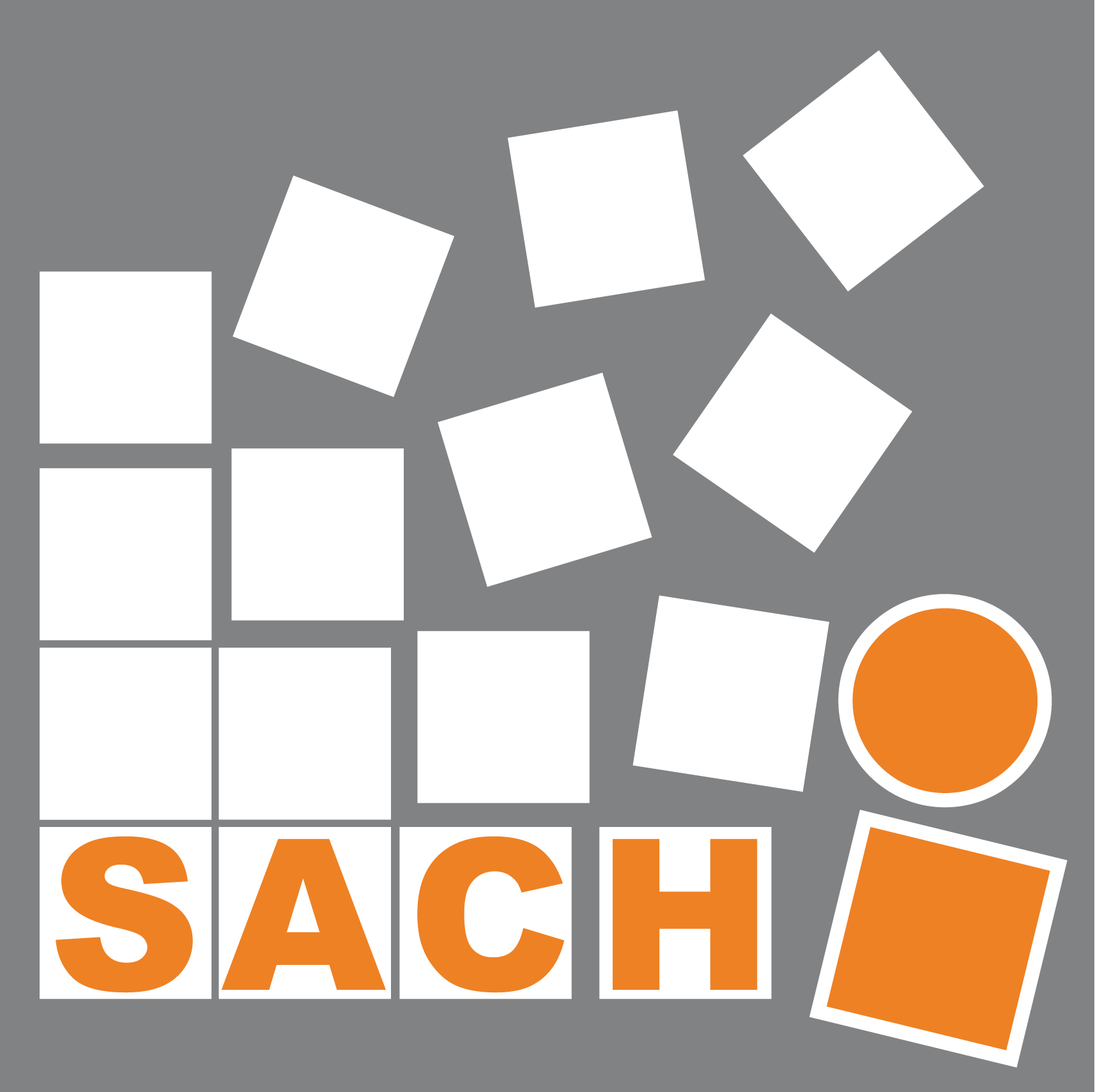<!–Speaker: John McCaffery, University of St. Andrews
Date/Time: 2-3pm Dec 12, 2012
Location: 1.33a Jack Cole, University of St Andrews –>
Abstract:
Open Virtual Worlds are a platform of several advantages. They provide an out of the box mechanism for content creation, distributed access and programming. They are open source so can be manipulated as necessary. There is also a large amount of content that has already been created within a Virtual World. As such, in the field of HCI experimentation they provide an interesting opportunity. When experimenting with novel modes of interaction prototypes can be created within a Virtual World relatively easily. Once the prototype has been created, users can be put into use case scenarios based around existing content. Alternatively, custom environments with very constrained parameters can quickly be created for controlled experimentation.
This talk will cover some of the interaction modes currently being experimented with by the OpenVirtualWorlds group.
Bio:
John McCaffery is a PhD student in the Open Virtual Worlds group. John works on investigating how the open frameworks for distributing, programming and manipulating 3D data provided by Open Virtual Worlds can be used to provide a model for how the 3D web may develop. Open Virtual Worlds is a general term for open source, open protocol client / server architectures for streaming and modifying 3D data. Examples include the SecondLife viewer and its derivatives and the SecondLife and OpenSim server platforms. John’s work includes investigating how the programming possibilities of Virtual Worlds can be extended and how Virtual World access can be modified to provide new experiences and new experimental possibilities, built around existing content. For more information on John’s Work see his research blog.
News
 Today is St Andrews day and a number of current and former SACHI members graduated from the University of St Andrews.
Today is St Andrews day and a number of current and former SACHI members graduated from the University of St Andrews.
Dr Umar Rashid who was supervised by Professor Aaron Quigley and Dr Miguel Nacenta was awarded his PhD for a thesis entitled “Cross-Display Attention Switching in Mobile Interaction with Large Displays”. Dr Per Ola Kristensson was his internal examiner and Dr Adrian Friday from the University of Lancaster was his external examiner. 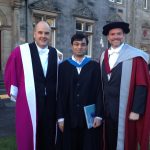
Jing Sun and Hong Xue who were supervised by Professor Aaron Quigley graduated with the Degree of M.Sc. Hong was awarded the Medal for M.Sc. in Information Technology and the School of Computer Science Award in Information Technology. Bin Han who was supervised by Dr Per Ola Kristensson graduated with the Degree of M.Sc. Moses Akazue supervised by Dr Miguel Nacenta graduated with the Degree of M.Sc. 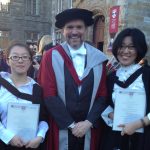
Anne-Marie Mann who is now a PhD student in SACHI graduated with the Degree of M.Sc.
 SACHI along with other colleagues in Computer Science and across St Andrews are organising a SICSA supported “Big Data Information Visualisation” summer school in July of 2013. We are working on developing the program for this summer school bringing together expertise in a number of areas. Over the weeks and months ahead we will be adding to this website as we confirm topics and speakers. We already have a number of colleagues locally dealing with big data who are willing to act as mentors and domain experts during the summer school.
SACHI along with other colleagues in Computer Science and across St Andrews are organising a SICSA supported “Big Data Information Visualisation” summer school in July of 2013. We are working on developing the program for this summer school bringing together expertise in a number of areas. Over the weeks and months ahead we will be adding to this website as we confirm topics and speakers. We already have a number of colleagues locally dealing with big data who are willing to act as mentors and domain experts during the summer school.
 Two SACHI members, Per Ola Kristensson and Aaron Quigley are organizing with other colleagues workshops at the CHI 2013 the ACM SIGCHI Conference on Human Factors in Computing Systems in Paris in April 2013. These workshops are called Blended Interaction: Envisioning Future Collaborative Interactive Spaces and Grand Challenges in Text Entry.
Two SACHI members, Per Ola Kristensson and Aaron Quigley are organizing with other colleagues workshops at the CHI 2013 the ACM SIGCHI Conference on Human Factors in Computing Systems in Paris in April 2013. These workshops are called Blended Interaction: Envisioning Future Collaborative Interactive Spaces and Grand Challenges in Text Entry.
Once the workshop websites are online, we will link from them here. (click on the CHI 2013 logo above to visit the main conference website).
 Aaron Quigley, Judy Kay and Tsvi Kuflik are guest editors for a UMUAI special issue on Ubiquitous and Pervasive User Modelling. You can see the full call for papers for this special issue here.
Aaron Quigley, Judy Kay and Tsvi Kuflik are guest editors for a UMUAI special issue on Ubiquitous and Pervasive User Modelling. You can see the full call for papers for this special issue here.
<!–Speakers: Miguel Nacenta and Aaron Quigley, Computer Science University of St. Andrews
Date/Time: 1-2pm November 20, 2012
Location: 1.33a Jack Cole, University of St Andrews (directions)–>
Abstract:
Miguel Nacenta recently attended ITS 2012. The ACM international conference on Interactive Tabletops and Surfaces brings together researchers and innovators from a variety of backgrounds including engineering, computer science, design, and social sciences. Miguel is going to share with us his impressions of the Research Papers, Demos, Tutorials and Workshops he participated in. The ideas and perspectives shared at this year’s ITS include multi-touch and gesture-based interfaces, 3D interaction, interactive surfaces in education and for children, multi-display environments, non-flat surfaces, multitouch development, sketching the user interfaces and high-performance ITS technologies.
Aaron Quigley attendance at the recent UIST 2012.conference, allows Aaron to offer insight into the interesting Research Papers, Videos and Demos he enjoyed there. UIST (ACM Symposium on User Interface Software and Technology) is the premier forum for innovations in the software and technology of human-computer interfaces. UIST brings together researchers and practitioners from diverse areas. Some of the topics we can expect to hear about are traditional graphical & web user interfaces, tangible & ubiquitous computing, virtual & augmented reality, multimedia, new input & output devices, and CSCW.
As both UIST 2013 and ITS 2013 are taking place here in St. Andrews next October, it would be worthwhile attending to get a flavour of what to expect next year.
About Miguel:
Dr. Miguel Nacenta has been a University of St Andrews lecturer since May 2011, where he cofounded the SACHI group. Prior to this he was a post-doctoral fellow at the Interactions Lab, University of Calgary, Canada. He holds an electrical engineering degree from the Technical University of Madrid (Ingeniero Superior, UPM), and a doctorate from the University of Saskatchewan, Canada, under the supervision of Prof. Carl Gutwin.
About Aaron:
Professor Aaron Quigley is the Chair of Human Computer Interaction in the School of Computer Science at the University of St Andrews. He is the director of SACHI, the St Andrews Computer Human Interaction research group, His appointment is part of SICSA the Scottish Informatics and Computer Science Alliance. From August of 2012 he is the SICSA deputy director for knowledge exchange. He is the general co-chair for UIST 2013 and ITS 2013 (in St Andrews in Oct 2013).
Today Professor Aaron Quigley will be giving his Inaugural Lecture in School III
The abstract for his talk is as follows: Billions of people are using interconnected computers and have come to rely on the computational power they afford us, to support their lives, or advance our global economy and society. However, how we interact with this computation is often limited to little “windows of interaction” with mobile and desktop devices which aren’t fully suited to their contexts of use. Consider the surgeon operating, the child learning to write or the pedestrian navigating a city and ask are the current devices and forms of human computer interaction as fluent as they might be? I contend there is a division between the physical world in which we live our lives and the digital space where the power of computation currently resides. Many day to day tasks or even forms of work are poorly supported by access to appropriate digital information. In this talk I will provide an overview of research I’ve been pursuing to bridge this digital-physical divide and my future research plans. This talk will be framed around three interrelated topics. Ubiquitous Computing, Novel Interfaces and Visualisation. Ubiquitous Computing is a model of computing in which computation is everywhere and computer functions are integrated into everything. Everyday objects are sites for sensing, input, processing along with user output. Novel Interfaces, which draw the user interface closer to the physical world, both in terms of input to the system and output from the system. Finally, the use of computer-supported interactive visual representations of data to amplify cognition with visualisation. In this talk I will demonstrate that advances in human computer interaction require insights and research from across the sciences and humanities if we are to bridge this digital-physical divide.
Professor Quigley is presenting a seminar in the University of Zurich as an invited speaker by Dr Elaine Huang.
Seminar abstract: Our bodies shape our experience of the world, and our bodies influence what we design. How important are the physical differences between people? Can we model the physiological differences and use the models to adapt and personalize designs, user interfaces and artefacts? Can we model, measure and predict the cost of users altering their gaze in single or multi-display environments? If so, can we personalize interfaces using this knowledge. What about when moving and while the distance between user and screen is varying. Can this be considered a new modality and used to personalize the interfaces along with physiological differences and our current gaze. In this talk we seek to answer some of these questions. We introduce an Individual Observer Model of human eyesight, which we use to simulate 3600 biologically valid human eyes. We also report on controlled lab and outdoor experiments with real users. This is to measure both gaze and distance from the screen in an attempt to quantify the cost of attention switching along with the use of distance as a modality. In each case, for distance, gaze or expected eyesight we would like to develop models which can allow us to make predictions about how easy or hard it is to see visual information and visual designs, along with altering the designs to suit individual users based on their current context.
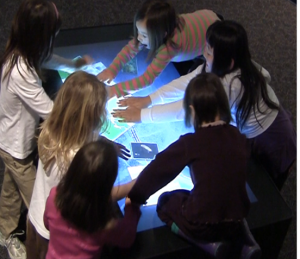 3 presentations on the state of the art
3 presentations on the state of the art
Open to all public
Tue Oct 16 – 1:30pm to 2:30pm
School VI Lecture Theatre, St Salvator’s Quad
Visit http://sachi.cs.st-andrews.ac.uk/activities/workshops/interactive-technologies-for-libraries-and-museums/ for more details.
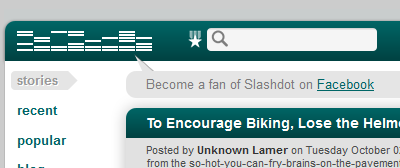 Today’s logo at slashdot.org was created by Jason Jacques, a new PhD student in the SACHI group!
Today’s logo at slashdot.org was created by Jason Jacques, a new PhD student in the SACHI group!
From slashdot.org: Artist Jason Jacques says: “While the main text itself is “obvious” in its fully animated form this logo provides additional challenge in that the remainder of the message must be decoded. Can you figure it out? If so, mail answer to logo15@slashdot.org. How did he do it? After calculating the necessary sizes and bit patterns on paper, the static image of the entire message was generated using Pixlemator on Mac OS X (Lion). This image was then processed using ImageMagick (and a short shell script) using Ubuntu. Additional editing was done to the logo portion in Pixelmator (OS X). These frames were then assembled into an animated gif using Jasc Animation Shop on Windows XP. Finally, the images were optimized to minimise their size using ImageOptim, back on OS X.”
